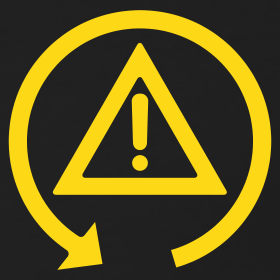Every car is different and may require specific air pressure for your tires.
This can be found on the frame of your driver’s door. This plaque will also tell you the recommended tires you should keep on your car per the manufacturer.
This usually applies to your everyday driver that probably doesn’t have custom tires or rims that would null the recommended pressure for the car.
Edit: WHY you should know! (I forgot to add thank u @_MoveSwiftly!) So keeping your tires inflated is important because a) it keeps you safe. Properly inflated tires will have better stopping power B) wear and tear on a tire is lessened and wear and tear on other aspects of your vehicle that require good balance like shocks and brakes. c) in most cases having your tires inflated to the proper psi/bar will help you hit the MPGs, horsepower and acceleration advertised for your car.
My cars all had this info under the gas cap. With details about number of people/load/comfort/economy.
Ditto, haven’t known it anywhere else!
Some cars also have tire pressure info on the inside of the gas cap cover, in case you can’t find it anywhere else.
It can also be located inside the glovebox on the passenger side for older vehicles.
Also be aware many spare tires (those thinner ones you find in the car) have larger pressure
My Car has the same kinda tyre as a spare. Why would the spare tyre need to have larger pressure?
Depends on the car and spare. On my car the spare is a much more thin tire compared to my regular ones. It’s meant to act as a short-term fix to get a proper tire back on. This type of spare isn’t meant to be used long-term.
Since it’s a different form than a typical tire, many spares (mine included) are almost double the PSI (~60) than my typical tire.
I’d say just make sure you check on the tire itself! It’s definitely likely it’s different from the main tires for many makes and models.
Yours wouldn’t. The low profile, low weight ones do.
Maybe different materials? Maybe because it’s thinner, the amount of air inside is different and it needs to be as bouncy as other tires
You should also know that normal driving will raise the temperature and therefore the pressure of your tires. This means if you’ve been driving for a while and set your your pressure to exactly what that placard says, you’re most likely going to have low pressure the next morning. Tire pressure should be set when cold. If that’s not possible, add about 4 psi more when you’re at the pump. The next morning you can use any cheap pressure gauge to check and let some air out to correct if necessary.
My cars have always had a message saying “+0.3 bar when hot” or something, so I’ve just done it according to that.
You never get the absolute exact perfect number anyway, because temperatures vary, loads vary and speeds vary. I just like to keep it somewhere below the empty car pressure and loaded car pressure, because sometimes I’ll have passengers and loot, sometimes I won’t.
I was driving the other week and my low tire pressure light went on. I opened the error page in the infotainment screen and sure enough it said “low tire pressure”.
I went to measure it and it was actually high tire pressure due to the hot weather. I let out some pressure and it went away.
So YSK that apparently cars will falsely report high tire pressure as “low” tire pressure and to always measure it before going to fill up.
Sounds like a faulty sensor
It isn’t always on the drivers side. It can be on the passenger side, sometimes front, sometimes rear… sometimes they put it in the glovebox - depends on the car manufacturer.
Source: used to work in tire shop.
So many people incorrectly think they should go by the number on the tire, not knowing that that number is the max that tire can hold, not the recommended pressure. Putting the max amount in prevents the tread from contacting the road flat, which will cause the middle of the tread to wear quicker than the rest. Same for too little pressure, but in this case the edges wear quicker than the middle. Using the recommended pressure for your vehicle ensures the tread is contacting the road evenly all the way across the width of the tread, and gets you the best gas mileage and treat wear.
This is one of my pet peaves. I work at a fire department and I can’t tell you how many times I catch the new guy airing the tires to like a billion psi because that’s what it said on the sidewall. EVERYTHING HAS A TIRE PLACARD, the sidewall is the max for the tire, if the placard says more than the sidewall says then you have the wrong tires.
When I first started driving I inflated my mom’s tires to the number on the sidewall and I still cringe thinking about how I probably almost killed myself with an exploding tire. I got home and I asked my brother if it’s supposed to take that long to fill up and he freaked out and we let the air out and he taught me the very valuable lesson of checking the placard.
Also if your car is German and the country you’re in is not, you may find yourself in a situation where your car is removed about tyre pressure but the only pump you can find at a petrol station is in PSI and the label is in Bar, and the only way you can convert those is to desperately wave your phone around like a madman trying to get some working internet while freezing cold in the rain. You might be well served by doing that conversion up front and writing it down somewhere.
Totally hypothetical situation, of course.
14.5 is the number you need to remember. It’s one bar.
So 1 bar = 14.5 psi? Just to make sure!
Yep, that is correct. The boost on my old GTI Turbo was set at one bar, this is how I remember it.
I went to a car show today and noticed a lot of text on the frame of a Lamborghini Aventador. I wondered what that was. Now I know.
My car’s plaque has columns with different values depending on how many people are in the car.
Does it mean people in the car while you’re airing the tires, or people usually in the car, or max people you intende to put in the car eventually?
Does anybody adjust the tyre pressure due to weight in the car? Surely driving with larger weight in the boot would require a difficult psi/bar for the tyres?
Edit: great ysk post!
Only on holidays. If I pick up some furniture, I don’t bother, but when I’m driving for one or two days straight with 4 people and luggage in the car, yes definitely. It helps that I can check/adjust my tire pressure where I wash my car every two weeks. I’m really particular about the handling of my car and the tires I drive on, so I’m always on top of the correct pressure.
I learned recently there is usually a sticker under the hood with the weight of refrigerant and oil to be put into the ac as well (really helped me in properly using a manifold gauge and pump on my truck)
I always read about what’s printed on tires. 🤷
You should always check the vehicle because things like weight and load can change the needed PSI.
My friend had a tire that was almost completely flat the other day and this tip always comes in handy.
If you ever change your wheels or tires, is this sticker supposed to be changed or updated?
If you get wheels or tires that need a different pressure you have a few options. I have used a sticker in the glove box, open the glove box and put a sticker on the inside of the part that opens. Those temporary name stickers from an office supply store work, just write the info on the sticker with a marker. I would not cover up the factory sticker because you may want to go back to the original setup or sell the car at some later date and keep the aftermarket wheels or sell them separately.
Thanks, I’ll keep that in mind if I ever get different wheels. Probably not, but you never know.
The only time I have seen them changed is on a chassis cab, the up fitter will add a new sticker.
Chances are even if you change your rim & tire combo on a passenger vehicle the pressures will still be the same. They are based of the weight of the vehicle and the load capacity. Maybe if you do something real crazy it would change but going from 17" to 18" won’t effect it.
No those stickers don’t get changed in any way if you get new tires. Those stickers are put on at the factory and are applicable regardless of brand of tire you switch to. Most passenger vehicles (such as cars, cuvs, etc) in the US run 30-35 psi anyways and you should prioritize what is written on the sticker over what the tire says.
Source: Me a former tire tech who worked into becoming an actual tech and eventually quit because I destroyed my body.
Thank you!
Could you please add a “Why YSK:”? It’s rule #2. Thank you. :)
And that’s good info you’re adding BTW.
Got it! Added an edit with a few “whys” thanks!












